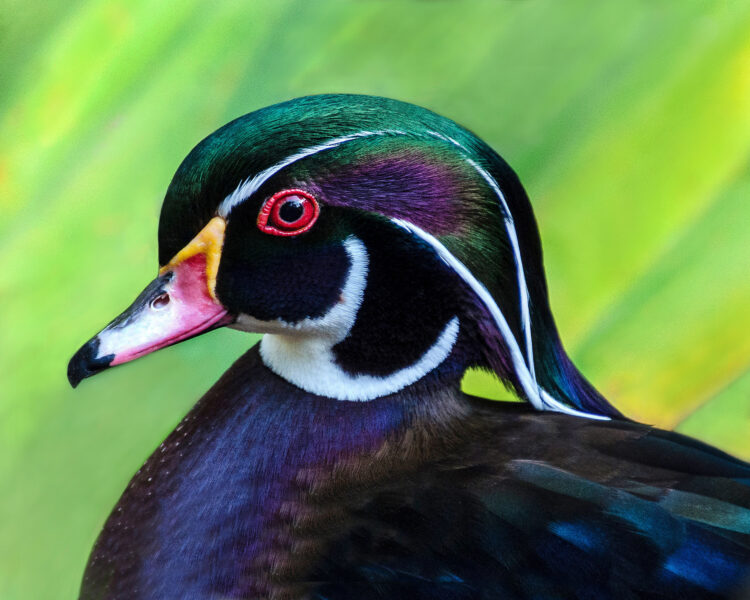
The stunning North American waterfowl, Wood Ducks, are effortlessly captivating. These water avians have red eyes, a combination of iridescent green and purple on their necks, and detailed white markings. They are one of the most beautiful native waterfowl. With that said, here are 10 facts about wood ducks.
Nest In Tree Holes
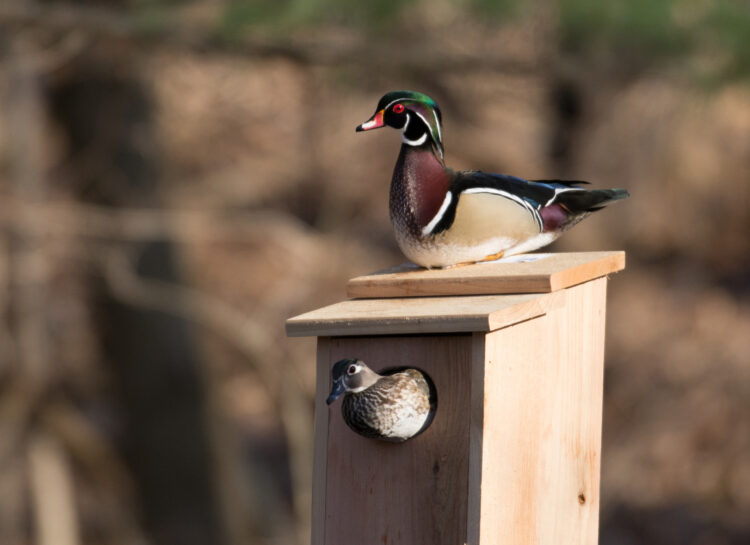
Amongst various North American duck species, Wood Ducks are unique. Although ducks commonly build nests on the ground, Wood ducks, unlike many others, nest in tree cavities. Wondering why? Well, they do so to protect their eggs and babies from predators. They do not build nests on erect trees though, rather they choose cavities on fallen branches.
Lay Up To 15 Eggs

Wood ducks produce a lot of eggs, as close to 15 in a single nesting attempt. The number can range from six to forty eggs depending on diet, calcium, age, weather, and other factors. This high egg production is advantageous for the species. It also increases the likelihood of their survival.
Ducklings Leap From Nests Early
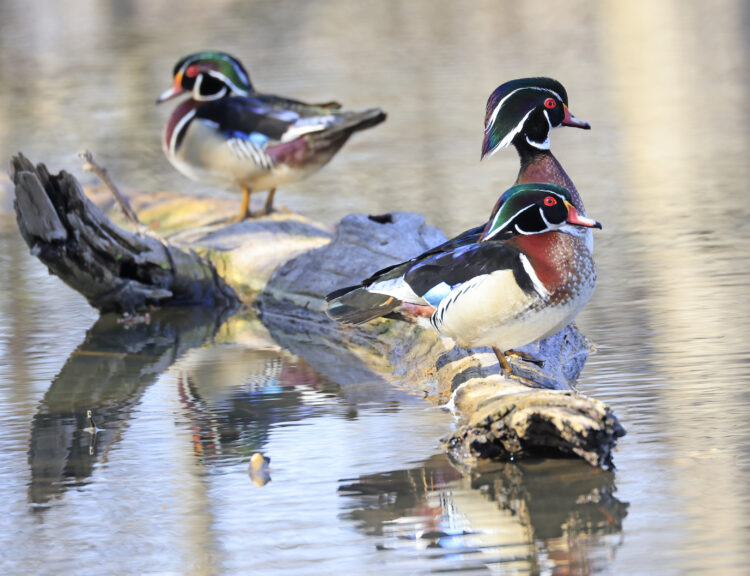
This fact may come as a surprise but wood ducklings may escape/ leap from their nests very early. Since they are born precocial (slightly mature), they leap from the nest soon after hatching. They jump to the grounds and then to the water source with the guidance of their mothers.
Spends Time In The Water
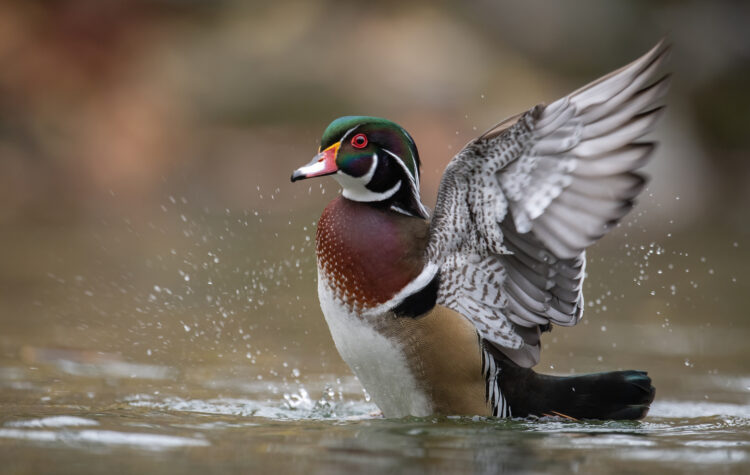
Contrary to their names, wood ducks are highly adapted to aquatic environments. They are likely to spend more time in and near water, be it lakes, ponds, marshes, rivers, or streams. They find water sources suitable for searching for food and shelter. However, they are commonly found across trees and forests.
Have Gripping Claws
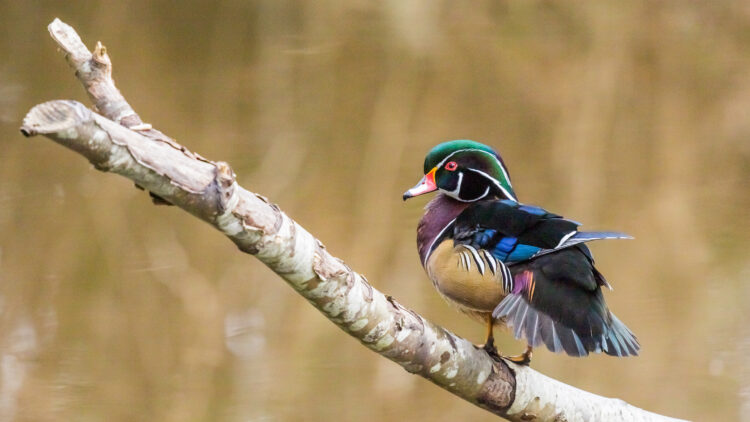
Do not assume wood ducks are gentle ones since they have gripping claws. These marine wonders have sharp, curved claws on their feet. This natural feature allows them to cling securely to rough trees and branches. Their claws are particularly helpful during nesting and roosting. Such claws are found in only some species of ducks.
See In Colour
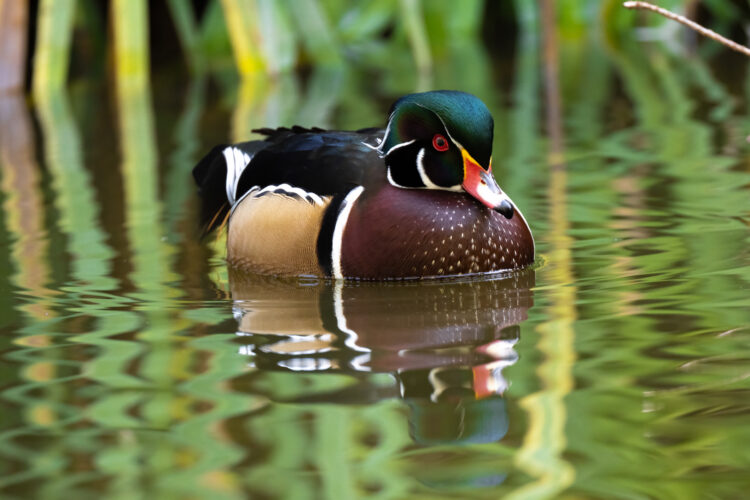
Developed color vision is typically rare in birds, but wood ducks have a monocular tetrachromatic vision. They have a 360-degree vision and four-dimensional color vision. Their color perception exceeds that of humans as well. This ability helps them to identify potential mates through their vibrant plumage.
Male: Drakes, Female: Hens
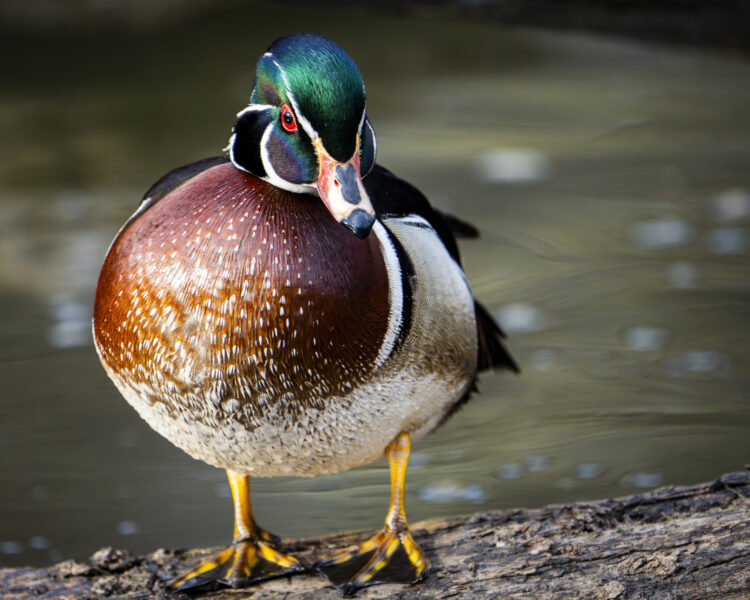
The male wood ducks are known as ‘Drakes,’ whereas the female wood ducks are known as ‘Hens.’ These distinct terms are useful in the study and classification of birds. Drakes are shimmery green, whereas hens are mostly brown. Unlike the usual gender stereotype, male wood ducks are more beautiful in their physical appearance.
Whistling Call

Wood ducks have distinctive whistling calls. Females make sounds like ‘oo-eek’ that rise in pitch, whereas males whistle ‘jeeeb’. Female wood ducks make loud sounds of oo-eek if they are disturbed or are taking flights. These vocalizations play a crucial role in communication.
Fast Flyers, Up To 40 Mph
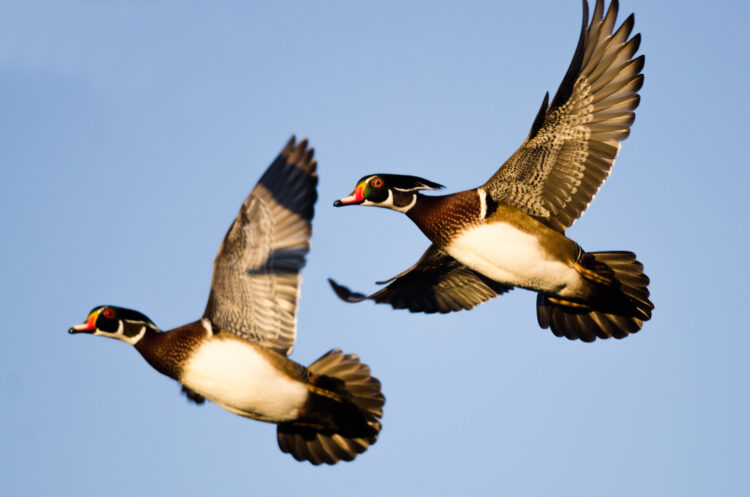
Wood ducks are fast flyers, like really fast between 40 and 55 miles per hour. They reach higher speeds during sustained flight. Wood ducks are agile and swift flyers, and their flying abilities are impressive among many ducks. Observing a wood duck fly is extremely beautiful, particularly when male ducks take flight from water.
Hybridize With Other Ducks
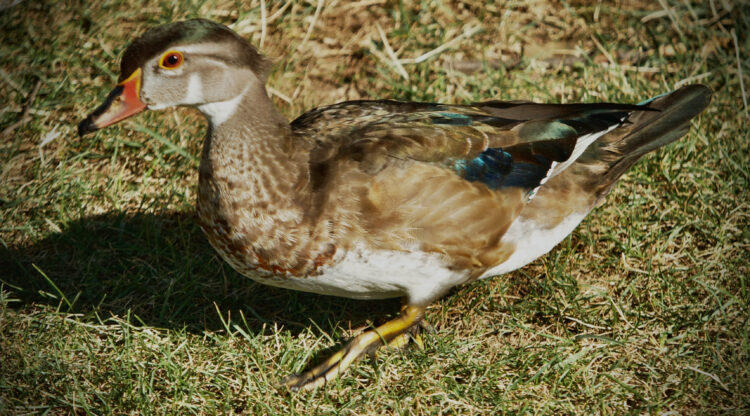
Wood ducks can hybridize with other ducks, and they often do so with mallards and mandarin ducks. However, they can hybridize with almost any other duck living around them. But the sad part is that their hybrid offspring are often infertile. They possess unique characteristics of both parents, but fertility remains in question.

Comments
Loading…